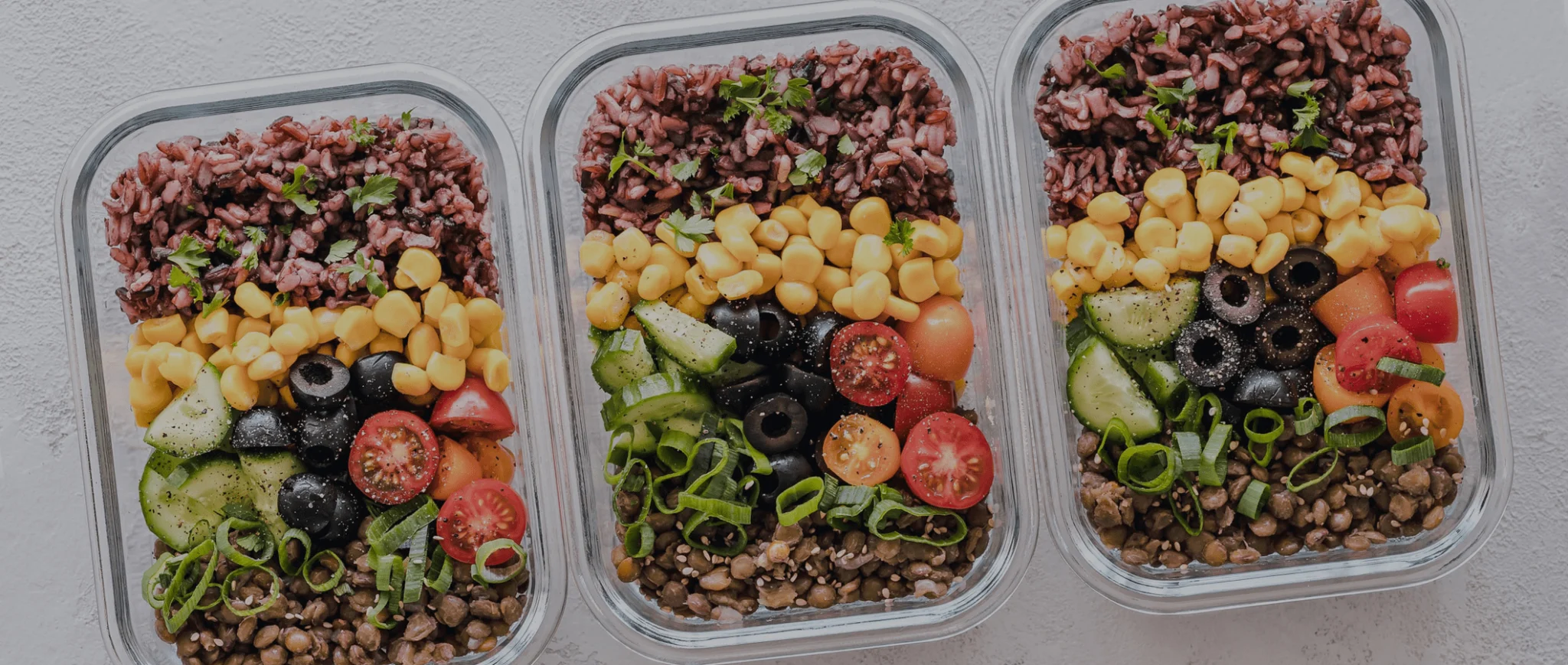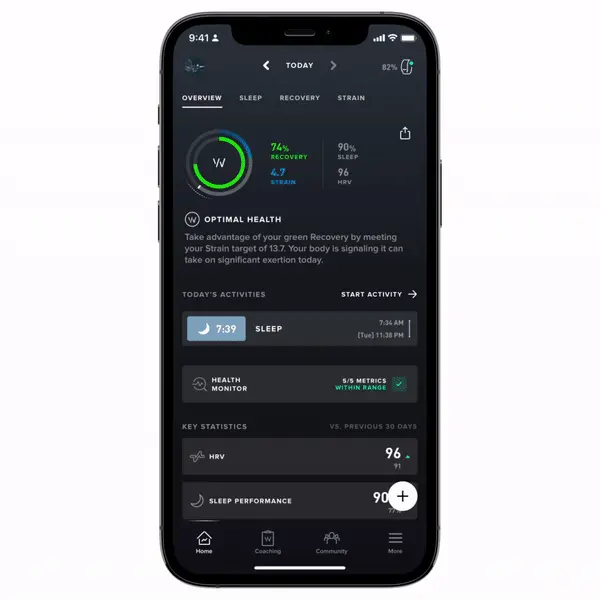Topics
- Article
- Nutrition
Track Macronutrients to Be More Efficient with Your Shopping & Nutrition

What are Macronutrients (Macros)?
Macronutrients are the nutrients we need an abundance of every single day. They are categorized as proteins, carbohydrates, and fats. Each of these play major roles in fueling and constructing the human body. As we start to understand which foods fall under which category, it’s important to know the classification is based on the primary molecule in that food. For example, brazil nuts consist of protein and fat molecules but are classified as a fat source. This is because brazil nuts are primarily made of fats.
Carbohydrates
Carbohydrates are made of carbon and water. Hence, the two parts of the word: carbo - and hydrate. Carbs are our main source of energy. They are stored in our muscles and organs as glycogen. In the form of fiber, carbohydrates help provide fuel for our microbiome too. They are found in vegetables, fruits, tubers, legumes, grains and sweeteners. Whole Food sources: Plantains, Banana, Grapes, Nectarines, Apples, Berries, Black Bean pasta, Lentil pasta, Quinoa, Parsnips, Winter Squashes, Carrots, Green zucchini, Yellow squash, Kale, Spinach, Brussel sprouts, Broccoli, Cauliflower, Rice, Rolled oats, White potato, Sweet potato, Japanese yams Best sources for pre & post workout: Rice, Rolled oats, White potato, Sweet potato, Japanese yams
Proteins
Proteins are made of amino acids and are the building blocks for tissues, organs, nerves, muscles and more. There are over 50,000 different proteins in the human body! Protein does more than create tissue. It is also an essential component for enzymes, antibodies, hemoglobin and peptide hormones. It repairs broken down muscle fibers post exercise, makes sure you have the right cofactors for metabolic processes, and contributes to your adaptive immune system. Protein is the primary nutrient for animal meats, seafood, and some legumes. Best sources: Chicken breasts, Chicken thighs, Ground turkey, Ground bison, Ground beef, 0% Greek yogurt, Mahi mahi, Shrimp, Sea scallops, Protein powder, Egg whites, Atlantic salmon, Steak, Whole eggs, Plant-based protein powder, Whey protein powder, Fuel For Fire pouches, EPIC Provisions protein snacks Best sources pre & post workout: Plant-based protein powder, Whey protein powder, Chicken breasts, 99% Ground turkey, 0% Greek yogurt
Fats
Contrary to popular belief, dietary fat is not the villain it’s made out to be. Fat is essential for optimal health and performance. Fats are made up of fatty acid molecules. They play numerous important roles in the body: Energy source, cell building blocks for cells, hormones, and increase satiety. They regulate inflammation too! There are three classifications of fats: Saturated, monounsaturated and polyunsaturated.
- Saturated fats are highly stable, don’t rancify easily, and are solid at room temperature. These are great to use for cooking!
- Monounsaturated fats are relatively stable, don’t rancify easily, and are liquid at room temperature.
- Polyunsaturated fats are relatively unstable, go rancid easily, and always liquid. Never heat or use polyunsaturated fats in cooking!
Trans fats, on the other hand, are a by-product of the hydrogenation process. Hydrogenation is the man-made manipulation of unsaturated fats. These fats are toxic and interfere with the essential roles fatty acids play within a healthy body. Avoid vegetable oils, fried fats, canola oil, margarine, and vegetable shortening. Best Sources Saturated: Duck fat, Pork fat, Ghee, Coconut oil Best Sources Monounsaturated: Olive oil, Avocado oil, Cashew oil, Almond oil, Pecan oil Best Sources Polyunsaturated: Flaxseed oil, Fish oil, Krill oil Best sources pre & post workout: NONE. Keep these meals low in fats.
Why Counting Macros Can Be Important
Counting and tracking macronutrients is a powerful short-term tool that shows you what is in the food you eat and how well your metabolism responds to it. Since nutrition needs a bio-individual approach, tracking is a great way to understand what foods work well for you. Macro tracking also guides you to control portions whether you are looking to gain, maintain, or lose weight. It sets you up for success to kick start your goal and learn how to continue it in the long run.
How Can I Find My Macros?
The first step is calculating your protein macronutrient target. As a guideline, start within 0.75 - 1.0 grams of protein per desired body weight. Next, depending on your activity level, calculate your carbohydrate macro target to be between 35-45% of daily calories. From there, your fat target becomes the remaining calories. Using your WHOOP as your personal guide to activity level and overall calorie expenditure is a good check point for your macro calculations. If you are looking to streamline your goals, head over to M2 Performance Nutrition Personalized Plans to get specialized macros targets and macro adjustments designed by our team of experts.
How Can I Apply Macros to When I'm Buying Food at the Grocery Store?
If you fail to plan, you plan to fail! Before heading to the store, make a list of 2-3 lean protein sources, 2-3 fatty protein sources, 3-6 different colored vegetables, 2 starch sources, nuts, seeds, cooking oils, and your favorite snacks. Your macros guide how much food from each category you need. Nutrition labels on the back of meat packages, goods, and produce give the breakdown of macronutrients per serving. You can simply utilize these labels to determine weekly food needs. It may take a little trial and error at first but that’s part of the process! Start with whole food sources by sticking to the perimeter of the store and then head down your favorite snack aisles. Specialized macronutrient tracking with quality food choices will positively impact your WHOOP recovery, resting heart rate, and sleep quality (these anecdotal observations suggest this nutritional approach may improve heart rate variability as well). It may take a few weeks for your body to adjust, but you should start to see a positive correlation around the 4-5 week mark of your new macro targets.
Auto-log your nutrition data
Now your WHOOP Journal can auto-log macronutrient data from the nutrition apps you already use. Learn how consuming different amounts of calories, carbs, fats, protein, and water help or hurt your daily Recovery. To auto-log your nutrition data, tap the blue banner in the Journal and watch as your nutrition data fills in from other apps like Cronometer through Apple Health. When you set up Auto-Log Nutrition, if you've already saved your journal for the day you won’t see the prompt for pre-filling your data until the next time you journal. Learn More: Apple Health Integration

REFERENCES
Nutritional Therapy Association. (2019). Basics of Nutrition Student Guide. The Basics of Nutrition. Retrieved from https://nta.brightspace.com/d2l/le/content/10063/Home Zupanič, N., Hribar, M., Pivk Kupirovič, U., Kušar, A., Žmitek, K., & Pravst, I. (2018). Limiting trans Fats in Foods: Use of Partially Hydrogenated Vegetable Oils in Prepacked Foods in Slovenia. Nutrients, 10(3), 355. https://doi.org/10.3390/nu10030355